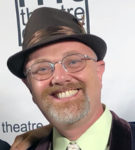
SAN DIEGO — The San Diego Convention Center would normally be bustling this weekend with devoted fans of science fiction, fantasy and horror dressing up and geeking out. This year, the center lays as quiet as a tomb. Yet, leave it to clever and resourceful nerds to find a way. Comic-Con International has moved online with presentations and forums via Zoom. While there is a variety of panel discussions and workshops to choose from, I decided to focus on a handful that feature comics as agents of social change.
Body Talk
“Draw what you see, not what you think you see.” -Christina “Steenz” Stewart, Prof of Cartooning, Webster College
It’s long been a standard of comics to draw both heroes and villains with idealized bodies rocking a pair of tights. Rarely do comics and superhero movies feature main characters with less than perfect physiques. But this panel of writers and artists is arguing for greater body diversity so that their audiences can have the validation of seeing themselves and look at their own bodies less critically.
Representation of ethnic minorities as the main characters is also important. More often, they are relegated to side-kick roles. Think of the Lone Ranger’s Tonto and the Green Hornet’s Kato.
Sometimes they have to push for a character’s inclusion in a story. Producers will ask, “Why do they have to be X (Black, Asian, Trans… etc.)?” Their response is “Why shouldn’t they be?” And if they can be part of this story, can they also be part of yours?
All the Starfleet Ladies: Then & Now
When Star Trek’s original pilot aired, it featured Majel Barett as a female first officer, Number One. But in 1965, TV wasn’t ready to see a woman in a position of military leadership. The Enterprise did have a female officers in Lt. Uhura and Yeoman Rand… dressed in mini-skirts. We would have to wait until 1995 for Star Trek: Voyager to see a female captain wearing pants.
According to the panel, fan fiction novels are the main vehicle for female characters to be fleshed out and explored in depth. Because these characters are not the writers’ own but the intellectual property of a larger, corporate universe, plot points and developments can always be shot down. But then something they create, such as the first names of Nyota Uhura and Hikaru Sulu, can be adopted into the official canon. Star Trek fan fiction novelist Una McCormack was bursting with joy as she told us that Number One went nameless for decades until she was officially given the name Una by one of McCormack’s friends and colleagues.
Reclaiming Indigenous History and Culture Through Comics
When you look at old westerns, most Native American characters were portrayed by ethnic Italians and Jews in makeup and wigs. (Personal note: I once had the pleasure of meeting Ed Ames who was famous for these roles.) I can’t fault the actors who needed a paycheck, but I can understand the consternation of Native Americans who felt their narratives were taken from their hands.
Chag Lowry is the creator a Soldier Unknown, a graphic novel about a native soldier in the US Army. It is published by Great Oak Press, a native owned publishing house based in Temecula, California. Lowry pointed out that comics are a sequential art, which has also been a traditional Native form of storytelling for centuries.
Kilma Lattin is the founder of OurWorlds.io, which has translated a traditional stick game into a digital format that kids can play on their phones. Lattin wants to “climb out of the history books” getting past turquoise jewelry to who his people are today. With respect for tradition, he embraces new technologies as the means to tell their stories in the twenty-first century.
Lights, Camera, LGBTQI- Identity!
Lights, Camera… IDENTITY is a comic book featuring three contestants from Ru Paul’s Drag Race mentoring a youth who is struggling with issues of sexual orientation and identity. They were joined by the organizers of NOH8 and the Pop-Culture Hero Foundation, both of which promote campaigns against bullying.
Why create a comic with drag queens as heroes? Pandora Boxx likened her drag to a superhero costume. It lets her be who she wants to be and speak her mind as she will. While they all hope and work for a better world without discrimination, Silky Nutmeg Ganache took a more realistic tone. She too wants to live in a society of complete acceptance. But as a Black drag queen in the Bible Belt state of Mississippi, she doesn’t expect to live there tomorrow.
Some of the monologues did go a bit long, especially the expressions of guilt over having White privilege. They were also critical of corporations marketing cosmetics and nail polish exclusively to women. This made me want to yell at the computer. Corporations exist to make money, not social change. Where there is demand, they will supply. But it’s up to the consumer to make it worth their while.
While there was a plethora of voices on this panel, there was little diversity of opinion. If they wanted a more engaging discussion, it would help if their panelists weren’t all on the same page.
San Diego’s Comic-Con International has a great deal more to offer including workshops for teachers and a pageant of painstaking, homemade costumes. And this year, you don’t have to wait in long lines or elbow your way through crowds. To experience the Covid Comic-Con, visit www.comic-con.org.
*
Eric George Tauber is a freelance writer specializing in coverage of the arts. He may be contacted via eric.tauber@sdjewishworld.com